
The Expansive (and Often Bizarre) History of Indiana Jones Games - Part One
Recent years haven’t been kind to the legendary, whip-cracking, fedora-rocking archeologist known—by his friends—as Indy. Since his exploits uncovering the Crystal Skulls back in 2008, the world has had as much love for Indiana Jones as your average cat has for the bathtub. Fortunately for the no-nonsense early 20th century treasure hunter, he’s being given another shot at regaining the public’s favour with a newly-announced videogame developed by MachineGames and published by Bethesda.
With only a teaser trailer and a handful of tweets to work with, it’s far too early to tell whether the renowned Wolfenstein developer will be able to do Indy justice, but the announcement has got me thinking about the famed fictional archaeologist regardless. I think now is the perfect time to take a look back at all the other Indiana Jones games populating the decades-long history of gaming, and there are an awful lot to look at. Some of them you may have heard of or even played. Others, however, might be completely new to you; they certainly were for me. So without further ado, let’s grab our trowels, clean our dust brushes and dig through history for Indiana Jones games of years past. Are you ready? Let’s get this excavation started!
Raiders of the Lost Ark (1982)
Atari 2600

“Is that cluster of pixels meant to be a whip?” “Where am I meant to be going?” and “What the f**k is going on?” are just a couple of the questions you may find yourself asking trudging through Raiders of the Lost Ark, the Atari 2600 classic based on the film of the same name. It’s dated by today’s standards—hell, it’s dated by ‘90s standards—but it was released at a time when videogames were still taking shape, so it’d be unfair to judge it too harshly. If I were to hold the game up to today’s standards, though, I’d call it a surreal lightshow with unclear objectives and about as much to do with Indiana Jones as a crumpled up styrofoam cup.
Indiana Jones in the Lost Kingdom (1984)
Commodore 64
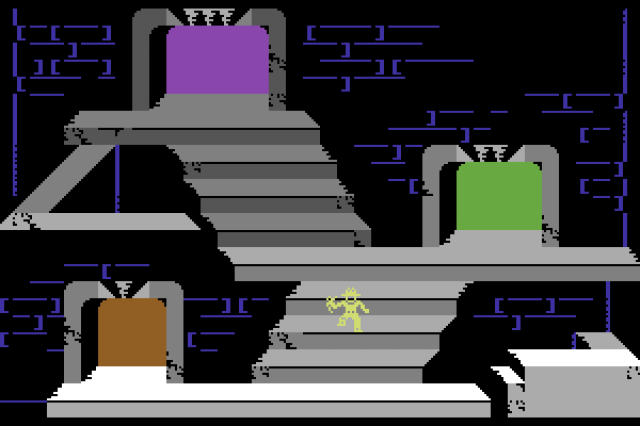
Credit: Myabandonware.com
“What’s your favourite Indiana Jones film? The Lost Kingdom? Wow, mine too!”
Ever heard that conversation? No, of course you haven’t. There is no Indiana Jones film with that name, which can only mean one thing: Indiana Jones in the Lost Kingdom for the Commodore 64 is the first Indy title not based on an existing film. What did developer Mindscape do upon being given free reign with the licence? Well, it was 1984: there wasn’t that much it could have done beyond make a slightly wonky 2D platformer with an incredibly limited colour palette. And that, my friends, is exactly what Mindscape did.
Indiana Jones and the Temple of Doom arcade (1985)
Atari System 1
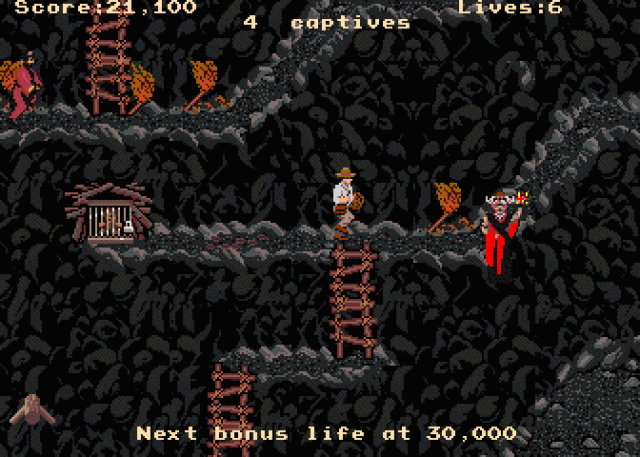
We’re off to the arcades for Indy’s next gaming adventure, this time based off the second film in the franchise. It may have only been released three years after the Atari 2600 relic, but Indiana Jones and the Temple of Doom arcade is leaps and bounds ahead of its predecessor. For a start, it features characters and environments which are actually… well, recognisable! I know, shocking, right? In addition, the gameplay structure is impressively complex for a product of the mid ‘80s, consisting of scrolling 2D stages, 2.5D segments and even vehicle segments too. Indiana Jones and the Temple of Doom arcade is an arcade classic which, alongside the retro charm which comes with most games of this era, also boasts a digitised rendition of Harrison Ford’s voice. What’s not to love?!
Indiana Jones in Revenge of the Ancients (1987)
PC and Apple II

Credit: Myabandonware.com
Okay, Mindscape. I stand corrected. When I said further up the page that you couldn’t have done much with the Indiana Jones licence beyond make a 2D platformer, I completely forgot about the existence of text adventure games. Alas, in 1987, it seems that you saw fit to prove me wrong by making another Indiana Jones game, this time for the PC and Apple II home computer. Set in Mexico, the adventure saw Indy and Marion Ravenwood (from Raiders of the Lost Ark) facing off against Nazis on the hunt for an artefact known as the “Mazatec Power Key”.
If you need me to describe the gameplay in this one, you’ve clearly never played a text adventure game before. Let’s just say that it takes a “minimalist” approach to graphics, and you might want to bring along your reading specs.
Indiana Jones and the Last Crusade: The Action Game (Releases Spanning 1989-1994)
Commodore 64, NES, Game Boy, Amiga, Macintosh, MS-DOS, Sega Mega Drive, Sega Game Gear and Sega Master System
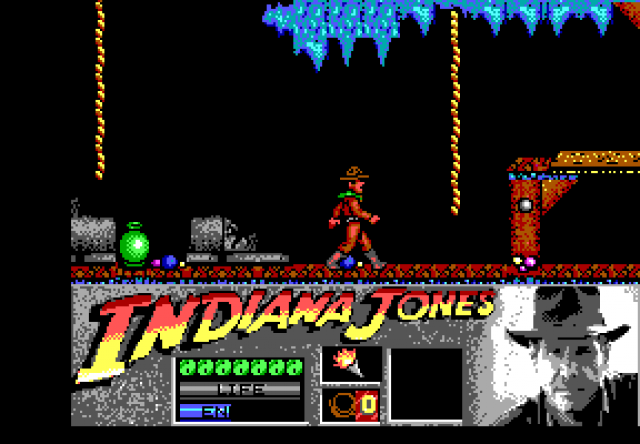
Notice the three-mile long list of platforms just an inch or two above these words? One of the three games (yeah, there were three) based on the third Indiana Jones film can hardly be described as just one game. With so many different versions released on various platforms, it’s more accurate to state that this entry actually encompasses a collection of loosely equivalent 2D platformers than a single game. Still, of the two wholly separate games released upon The Last Crusade’s cinematic release (the third game released a little later), this one is the least significant anyway. You’ll know why soon enough.
Indiana Jones and the Last Crusade: The Graphic Adventure (1989)
DOS, Amiga and Atari ST
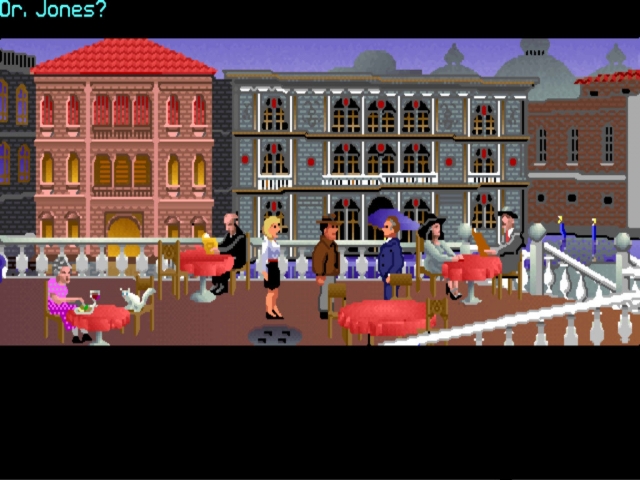
Now here’s the ‘real’ Last Crusade game. Sorry to all the fans of the Action variant, but it’s true. This game was the third to be built upon the legendary SCUMM engine, also behind titles like Day of the Tentacle and Full Throttle. If you’re familiar with the SCUMM engine (or you’ve just read the damn title of the game), you’ll already know this is a graphic adventure that recounts the events of The Last Crusade. It’s also notable for introducing a system of puzzle-solving which allows for—and even rewards the discovery of—multiple solutions, adding to the game’s replay value. This is certainly one of the high points in Indy’s gaming career. Enjoy it while it lasts, pal.
Indiana Jones and the Last Crusade (Taito Version) (1991)
NES
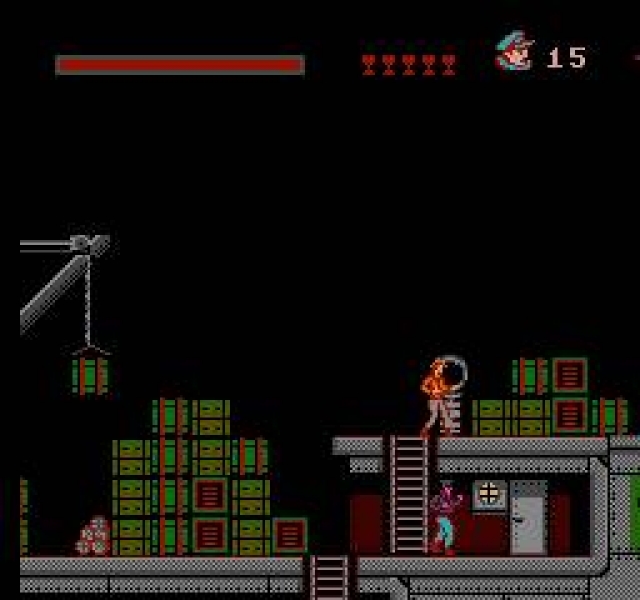
The people at Taito aren’t soothsayers. When they saw the videogame adaptations of Indiana Jones and the Last Crusade releasing on various home computers, they couldn’t possibly have known that the same game would also release just a handful of years later on the NES. They must have thought they were doing NES owners a solid by giving them an Indiana Jones platformer they wouldn’t need an Amiga or a Commodore 64 to play. In reality, they only ended up muddying the NES waters and confusing generations of people researching the history of Indiana Jones games (i.e. writers of franchise retrospective articles like this).
To be clear, this version of Indiana Jones and the Last Crusade has nothing to do with the previous two entries on this list. It’s a wholly separate 2D platformer with a few puzzle segments thrown into the mix to spice things up. Okay, “spice” is maybe too strong of a word. Let’s just say that it’ll keep you happy if you’re a fan of sliding tile puzzles (I certainly am not).
Indiana Jones and the Fate of Atlantis: The Action Game (1992)
Amstrad CPC, Atari ST, Commodore 64, Commodore Amiga, PC-DOS and Sinclair ZX Spectrum
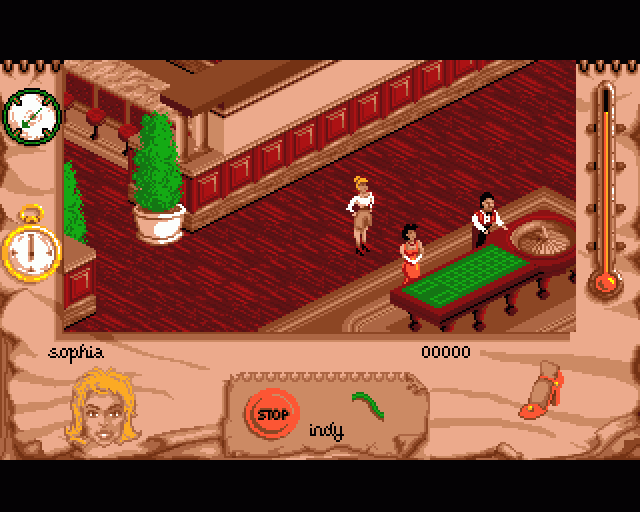
Point-and-click adventure games aren’t exactly surefire successes nowadays. You’ve got to wonder if it was the same back in the early ‘90s. I’m inclined to think so, judging by the recurring trend of Indiana Jones point-and-click adventure games launching alongside less interesting “Action Game” counterparts. This, then, is another one of those less interesting counterparts. While it follows the same basic storyline as the adventure game (which we’ll explore in a moment), the gameplay instead sees Indy, and sometimes his companion Sophia Hapgood, waddling around isometric environments and smacking villains around the face (or else kicking them in the groin). Want to know more? So would I. Unfortunately, it seems that we’ve pretty much covered the long and short of it. Onto more interesting games we go!
Indiana Jones and the Fate of Atlantis (The Graphic Adventure) (1992)
PC, Amiga, Mactintosh and FM Towns
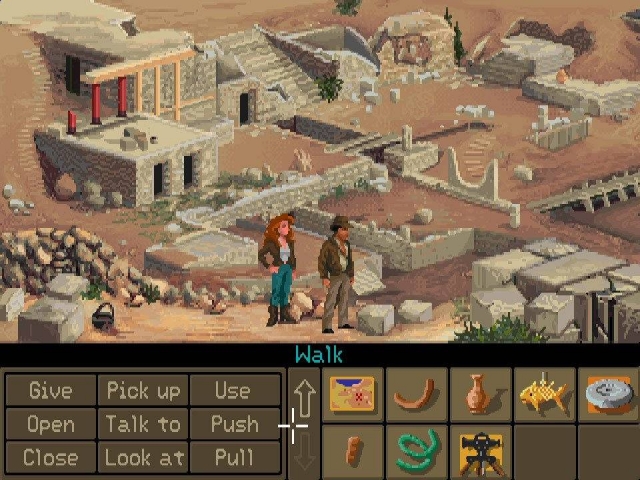
You can disregard what I said earlier about point-and-click games not being guaranteed successes in the ‘90s. After all, this point-and-click title was a bona fide hit for LucasArts and remains one of the company’s most successful games ever made using the SCUMM engine. Set around World War Two, the story sees Indy teaming up with his ex-colleague Sophia Hapgood (now working as a psychic) and searching for the lost city of Atlantis. Why? Well because Nazis want to find it first and use the city’s powers to become gods.
Just like the earlier LucasArts Indiana Jones game and its open-ended puzzles, this one also has its share of innovative design choices. Early in the story, the game gives players a choice of three “paths” for the adventure: ”Wits”, ”Fists” and ”Team”. Each path features unique content and brings with it a different style of gameplay. ”Wits” features an abundance of puzzles, ”Fists” is packed full of action scenes and ”Team” invites Sophia Hapgood along for the ride as Indy’s companion.
Note: If you were wondering (I was), “FM Towns”, one of the listed platforms for this title, was a Fujitsu-produced home computer exclusive to Japan.








COMMENTS